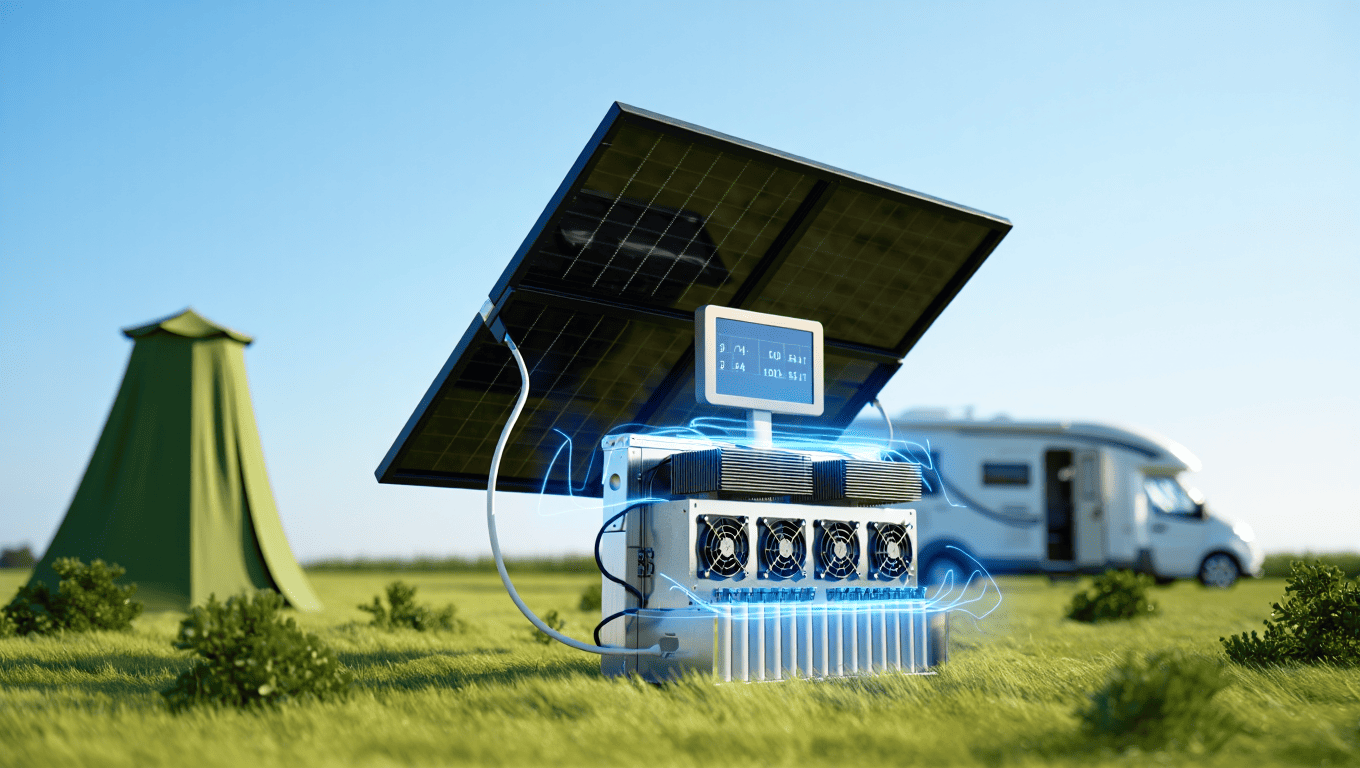As renewable energy technologies evolve, solar power continues to redefine how we approach everyday challenges. One standout innovation capturing the interest of eco-conscious users is the battery cooler solar panel—a system that merges solar energy with thermal management to protect and optimize battery performance. Whether you’re an off-grid adventurer, a sustainability advocate, or a homeowner aiming to cut energy costs, this guide dives deep into how these systems work, their advantages, and how to implement them effectively.
What Makes Battery Cooler Solar Panels Unique?
Battery cooler solar panels are specialized setups that use solar energy to regulate battery temperatures. Batteries, particularly those in high-demand applications like RVs, solar storage units, or emergency power systems, are prone to overheating. Excessive heat accelerates chemical degradation, reducing efficiency and lifespan. By pairing solar panels with cooling mechanisms, these systems maintain batteries at ideal temperatures while minimizing reliance on grid electricity.
Common applications include:
-
Off-grid cabins or tiny homes
-
Camping, RV trips, and marine use
-
Remote telecommunications equipment
-
Backup power systems for emergencies
How Do Battery Cooler Solar Panels Function?
The system operates through three core components:
-
Solar Panel: Harvests sunlight and converts it into electrical energy.
-
Cooling Unit: Uses solar-generated power to regulate battery temperature via fans, thermoelectric modules, or liquid cooling.
-
Battery Bank: Stores energy for devices while being actively cooled.
Here’s the process in action:
Sunlight hits the solar panel, generating electricity. This energy powers the cooling unit, which extracts excess heat from the battery. The result? A stabilized temperature environment that prevents overheating and maximizes energy retention. This closed-loop system ensures efficiency and sustainability, as it relies entirely on renewable energy.
Top Advantages of Solar-Powered Battery Cooling
Why invest in a battery cooler solar panel? Here’s what sets these systems apart:
1. Extended Battery Lifespan
Heat is a battery’s worst enemy. By maintaining optimal temperatures, cooling systems slow down degradation, ensuring your batteries last years longer.
2. Energy Independence
Solar power eliminates dependence on fossil fuels or grid electricity, making these systems ideal for remote locations or eco-friendly homes.
3. Cost Savings
Reduce energy bills by tapping into free solar power. Over time, the savings on battery replacements and electricity add up.
4. Eco-Friendly Operation
Lower carbon emissions and reduce waste by pairing renewable energy with efficient battery preservation.
5. Enhanced Reliability
Prevent unexpected breakdowns caused by overheated batteries, ensuring consistent power for critical devices.
Choosing the Right System: Key Considerations
Not all battery cooler solar panels are created equal. Keep these factors in mind when selecting a setup:
Solar Capacity
Match the panel’s wattage to your energy needs. Higher-wattage panels suit larger batteries or high-heat environments.
Battery Type Compatibility
Lithium-ion, lead-acid, and AGM batteries have unique cooling requirements. Ensure the system aligns with your battery’s specifications.
Durability
For outdoor use, prioritize weather-resistant panels and corrosion-proof cooling units. Look for IP65+ ratings for dust/water resistance.
Portability
Compact, lightweight designs are essential for mobile applications like camping or RVing.
Smart Features
Advanced models offer Bluetooth monitoring, automatic temperature adjustments, or compatibility with solar charge controllers for optimized performance.
Scalability
Can the system support additional batteries or panels if your needs grow? Opt for modular designs for future flexibility.
Installation Tips for Peak Performance
Proper setup ensures your battery cooler solar panel operates efficiently:
1. Optimize Solar Panel Placement
Install panels in a location with maximum sun exposure—south-facing angles (in the Northern Hemisphere) or tilt mounts work best. Avoid shading from trees or structures.
2. Secure Connections
Use high-grade cables and connectors to link the solar panel, cooling unit, and battery. Loose connections can cause energy loss or safety hazards.
3. Incorporate a Charge Controller
Prevent overcharging by installing an MPPT or PWM controller. This also boosts energy conversion efficiency.
4. Test Before Full Deployment
Run the system during sunny hours to confirm the cooling unit activates and the battery remains within safe temperature ranges (typically 20–25°C or 68–77°F).
5. Consider Ventilation
Even with cooling, ensure the battery enclosure has airflow to avoid heat buildup.
Maintenance Checklist for Longevity
While low-maintenance, these systems thrive with periodic care:
-
Clean Solar Panels Monthly: Wipe away dust, pollen, or snow to maintain energy output.
-
Inspect Cooling Components: Check fans or coolant levels every 3–6 months.
-
Monitor Battery Health: Use a multimeter to track voltage and charge cycles.
-
Update Software: For smart systems, install firmware upgrades to enhance functionality.
-
Winterize if Needed: In freezing climates, insulate batteries or use heating elements to prevent cold-related damage.
Embrace Sustainable Energy Innovation
Battery cooler solar panels are more than a niche gadget—they’re a practical step toward energy resilience and environmental stewardship. By safeguarding batteries with solar power, users gain a reliable, cost-effective solution that aligns with global sustainability goals.
As solar technology advances, expect lighter, more efficient cooling systems to hit the market. For now, this guide equips you with the knowledge to choose, install, and maintain a system tailored to your needs. Whether powering a weekend adventure or a year-round off-grid home, harnessing the sun’s energy to protect your batteries is a win for both practicality and the planet.
